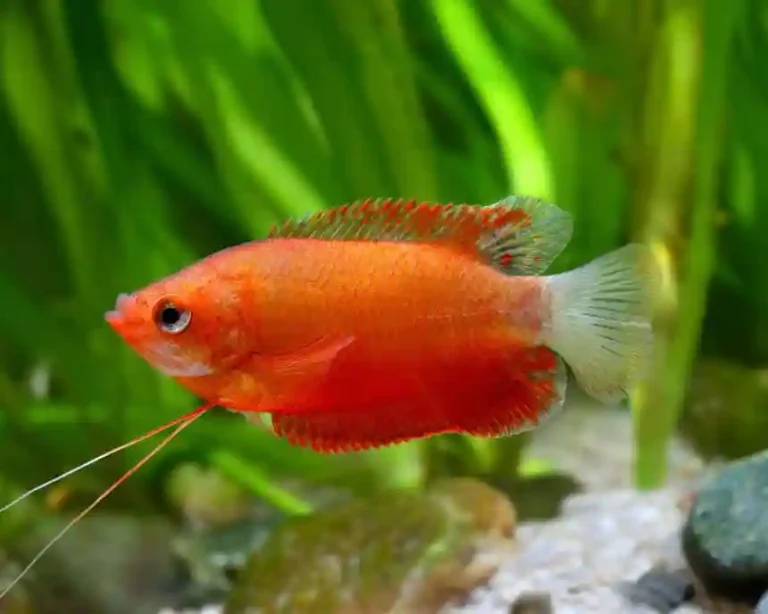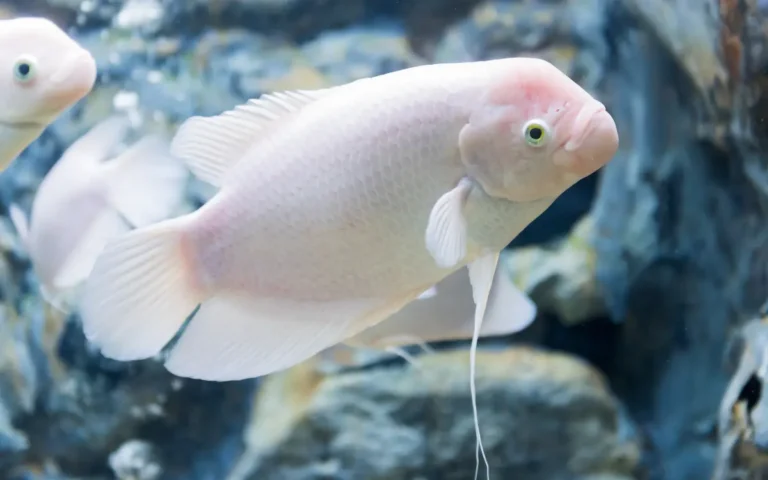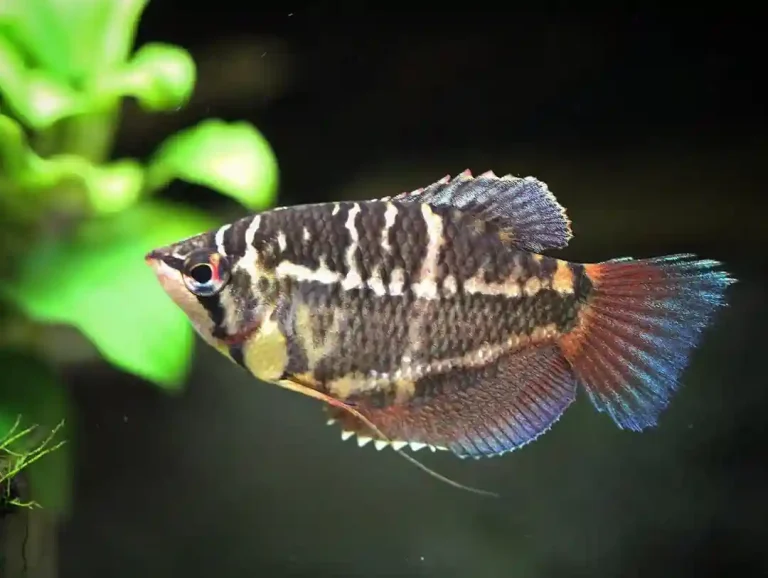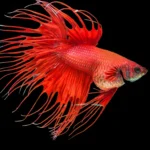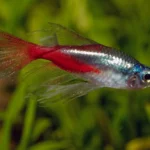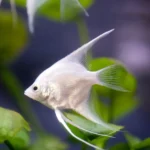Geophagus cichlids need a soft sand substrate, warm water (75–82°F), and a peaceful tank with plenty of space. They are bottom-dwelling, peaceful fish that thrive in groups and enjoy sifting sand for food. Feed them sinking pellets, frozen foods, and occasional vegetables. Proper care includes stable water conditions, suitable tank mates, and room for natural digging behavior.
What is a Geophagus Cichlid?
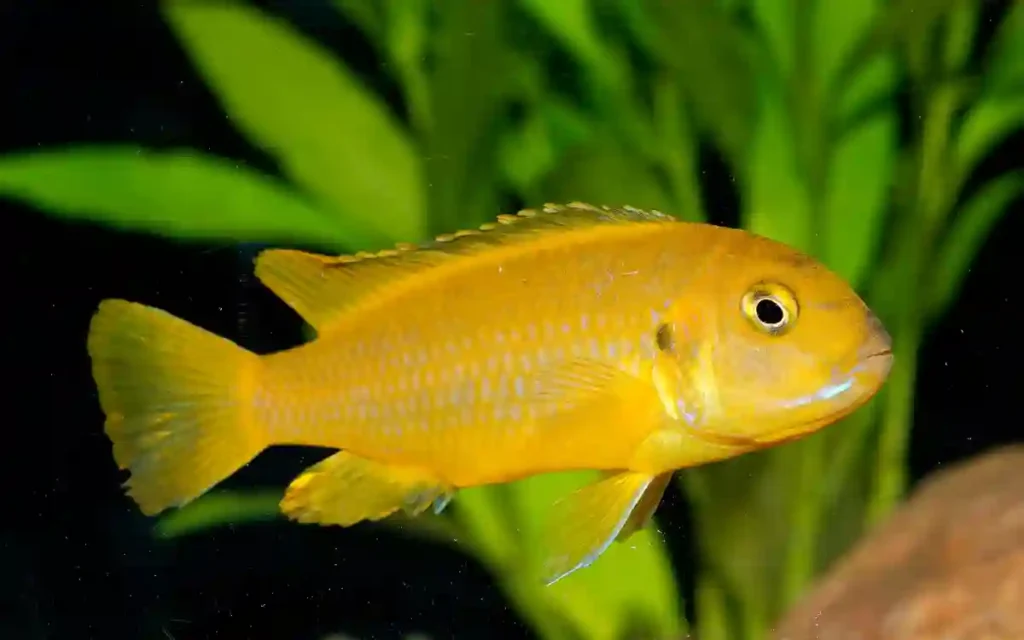
Geophagus cichlids are a group of South American freshwater fish known for their peaceful nature and bottom-feeding behavior. The name Geophagus means “earth eater,” referring to their habit of sifting sand through their gills to find food.
They belong to the Cichlidae family and are popular in aquariums for their vibrant colors and interesting behavior.
Popular species include:
- Geophagus brasiliensis – larger and more aggressive
- Geophagus altifrons – peaceful, colorful, and commonly kept
- Geophagus steindachneri – red hump species, good for mid-size tanks
- Geophagus red head Tapajos – known for their red-orange head and schooling nature
Geophagus cichlids are best kept in groups and need a soft, sandy substrate to exhibit their natural digging behavior.
Origin and Natural Habitat
Geophagus cichlids are native to South America, primarily found in the Amazon, Orinoco, and Paraná river basins. They inhabit slow-moving rivers, streams, and floodplains with sandy or muddy bottoms.
In the wild, they live in:
- Soft, slightly acidic to neutral waters
- Areas with leaf litter, submerged wood, and sandy substrate
- Low to moderate flow environments where they can sift through the substrate for food
Their natural habitat influences their behavior in aquariums—they constantly dig, forage, and turn over sand in search of small organisms. Providing a similar environment in captivity is essential for their health and natural behavior.
Coloration and Body Features
Geophagus cichlids are known for their elegant body shape and iridescent scales that shimmer under aquarium lighting. Most species have a long, oval body with extended dorsal and anal fins, giving them a graceful appearance.
Common features include:
- Base colors ranging from beige and silver to gold or olive
- Pearl-like spotting or striping along the body and fins
- Bright accents of red, blue, or green depending on species and mood
- Eye stripes or face markings in many types
Notable variants:
- Geophagus red head Tapajos – bright orange-red head and cheeks
- G. steindachneri – males develop a distinct nuchal hump
- G. altifrons – known for bold vertical bars and iridescent spangling
Their colors intensify with good diet, proper care, and during breeding. Subtle differences in body shape and fin length also help distinguish between species and genders.
Compatible Tank Mates
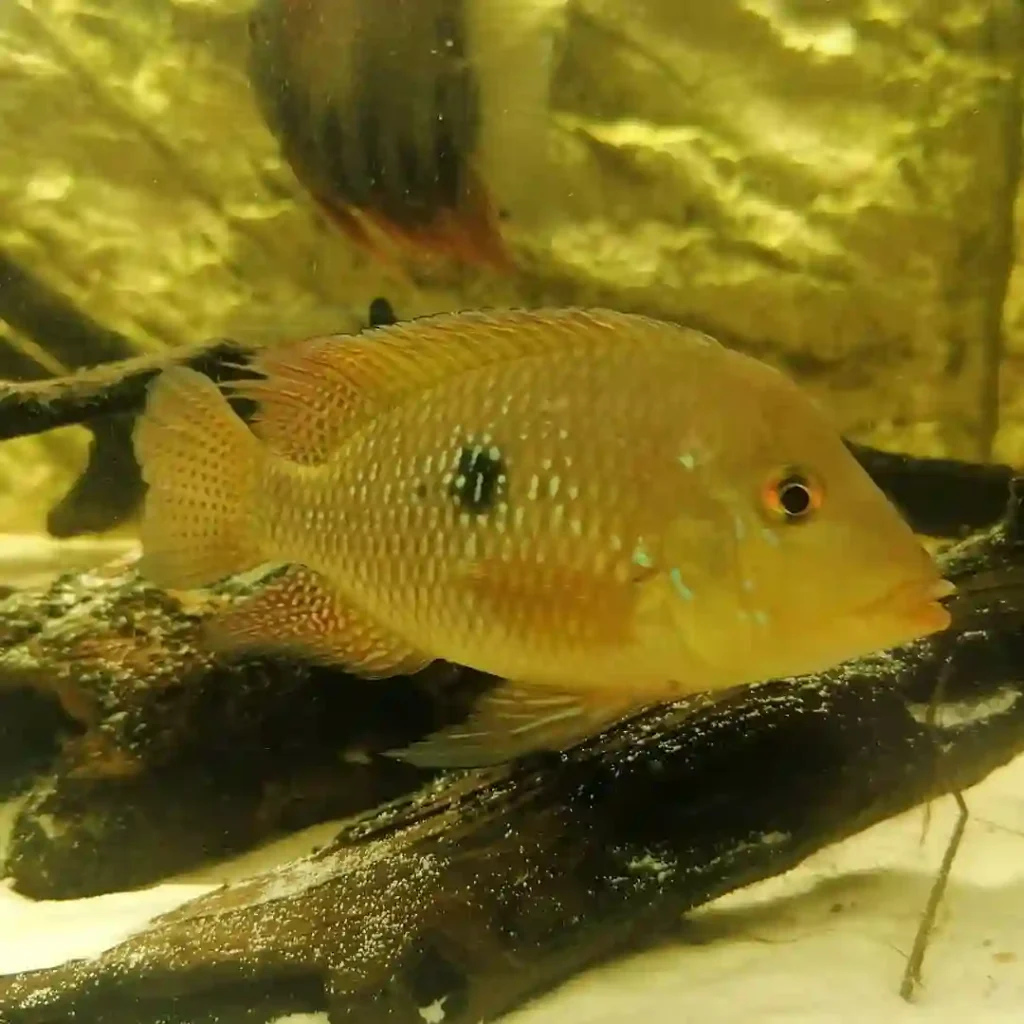
Geophagus cichlids are generally peaceful and do well in community tanks with other calm or semi-aggressive fish that can handle their active, bottom-sifting behavior.
Ideal tank mates include:
- Other peaceful South American cichlids (Severums, Keyhole Cichlids)
- Corydoras catfish – peaceful bottom dwellers that won’t compete aggressively for space
- Plecos – like Bristlenose or Rubber Lip, which stay out of the way
- Larger tetras – such as Congo Tetras or Buenos Aires Tetras
- Silver Dollars – fast, peaceful, and occupy upper levels
Avoid tank mates that are:
- Too small (may be accidentally eaten or harassed)
- Aggressive or overly territorial (like large Central American cichlids)
- Fragile or sensitive to digging activity
Keeping Geophagus in groups of 4–6 or more reduces stress and prevents aggression. Choose tankmates that enjoy similar water parameters and won’t mind a bit of bottom-level digging.
Read also: 11 Stunning Types of Geophagus
Geophagus Tank Setup and Environment
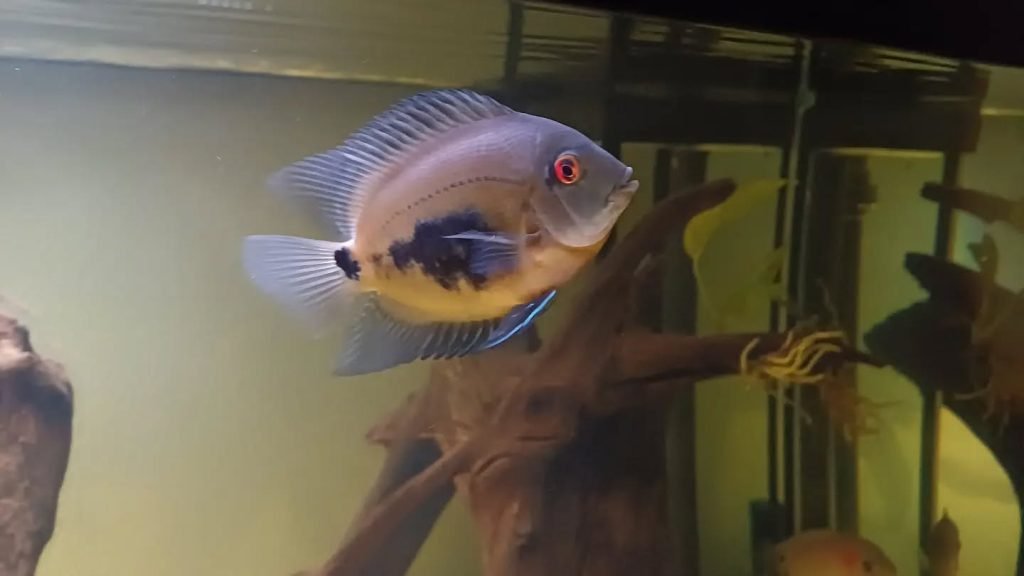
Creating the right tank setup is essential for healthy, active Geophagus cichlids. Their natural behavior revolves around sifting sand, so the tank should mimic soft-bottom river environments.
Tank Size:
- Minimum 55 gallons for a small group (4–5 fish)
- 75+ gallons preferred for larger species or community setups
Substrate:
- Fine sand only — this allows safe digging and feeding
- Avoid gravel or sharp substrates, which can injure their gills
Decorations:
- Use driftwood, smooth rocks, and leaf litter to create hiding areas and natural visuals
- Keep open space for swimming and sifting
- Live plants can be used, but choose hardy types or floaters—Geophagus may uproot soft plants
Water Flow & Filtration:
- Moderate flow to mimic river conditions
- Use strong but gentle filtration (canister filters work well)
- Maintain stable parameters with regular water changes
Lighting:
- Moderate lighting preferred
- Helps showcase their iridescent colors without stressing them
This setup keeps your Geophagus happy, active, and able to express their natural behaviors safely.
Geophagus Feeding and Diet
Geophagus cichlids are omnivores with a strong preference for bottom-feeding. In the wild, they sift sand through their gills to extract small insects, crustaceans, and organic debris. In the aquarium, they’ll happily accept a variety of quality foods if it sinks to the substrate.
Recommended diet includes:
- Sinking pellets or wafers – designed for cichlids or bottom feeders
- Frozen or live foods – such as bloodworms, brine shrimp, and daphnia
- Blanched vegetables – like zucchini, spinach, or peas (occasionally)
- High-protein treats – mysis shrimp or chopped earthworms (in moderation)
Feeding Tips:
- Feed 1–2 times per day in small portions
- Use sinking foods only—they rarely feed from the surface
- Rotate between protein and veggie-based options for balanced nutrition
- Avoid overfeeding to prevent water quality issues
A varied, protein-rich diet helps enhance their colors, support breeding, and promote overall vitality.
Male vs. Female Geophagus
Telling male and female Geophagus apart can be subtle, especially in younger fish. However, a few physical and behavioral traits become more noticeable as they mature.
Key differences include:
- Size:Males are usually larger and grow faster than females.
- Fin Shape:Males often develop longer and more pointed dorsal and anal fins, while females tend to have shorter, more rounded fins.
- Color Intensity:During breeding, males may show brighter colors and more defined markings, especially in species like Geophagus steindachneri.
- Body Shape:Females are typically more rounded, especially when full of eggs, while males may appear more streamlined.
While these differences help in general sexing, the best way to ensure a pair is to observe breeding behavior in a group.
Breeding Geophagus in Home Aquariums
Breeding Geophagus cichlids can be rewarding and is possible with the right tank conditions and a compatible pair. Breeding behavior may vary slightly by species, but most follow a similar pattern.
Breeding Setup:
- Separate breeding tank (optional but helpful for success)
- Warm, soft, slightly acidic water – around 80–82°F (27–28°C)
- Sandy substrate for digging pits or depressions
- Flat stones or open areas for spawning
Spawning Behavior:
- Most Geophagus species are substrate spawners
- Pairs will clean a spot and lay eggs, typically in shallow pits they dig themselves
- Eggs hatch within 2–4 days, and fry are usually free-swimming in about a week
- Some species (like G. steindachneri) may exhibit mouthbrooding behavior
Fry Care:
- Feed fry with infusoria, then move to baby brine shrimp as they grow
- Parents may guard fry for a short time, but separation may be needed in community tanks
- Keep water clean and stable to avoid stress or disease during this period
Breeding is easier in species-specific tanks with low aggression and no competition for territory.
Final Thoughts on Geophagus Care
Geophagus cichlids are an excellent choice for aquarists who want active, peaceful fish with natural behaviors and beautiful coloration. Their unique sand-sifting feeding style, social temperament, and compatibility with other South American species make them ideal for well-planned community setups.
To keep Geophagus healthy and thriving:
- Provide a fine sand substrate
- Maintain stable, warm water conditions
- Offer a varied sinking diet
- Choose peaceful tank mates and roomy tanks for group living
- Support natural behavior with proper décor and gentle water flow
With the right environment, Geophagus cichlids will display stunning colors, interact socially, and even breed in captivity—bringing movement and life to the bottom of your aquarium.

